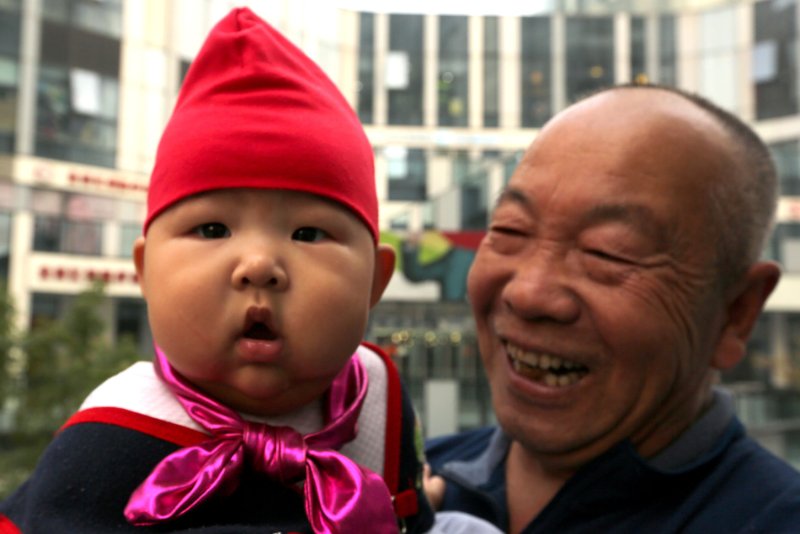A proud grandfather holds his young grandson while shopping at an international mall in Beijing on October 29, 2015, after the announcement that the Chinese government would scrap its notorious one-child policy, which officially ended January 1, 2016. A year after the one-child policy was replaced with a two-child policy, China's birth rate increased 11.5 percent to its highest level since 2000. File Photo by Stephen Shaver/UPI |
License Photo
Jan. 23 (UPI) -- China's birth rate increased 11.5 percent last year when compared to the year prior after the country's one-child policy was abandoned, officials said.
The National Health and Family Planning Commission said 18.46 million births occurred in 2016. The birth rate was the highest since 2000 despite a decrease in the number of women of childbearing age.
The commission said the higher birth rate was directly connected to the Chinese government last year changing its one-child policy rule to a two-child rule. More than 45 percent of children born last year had one or more older siblings.
"While the total number of women of childbearing age fell by 5 million, the number of births increased significantly, showing that the family planning policy adjustments were extremely timely and extremely effective," NHFPC official Yang Wenzhuang said.
Yang said the NHFPC estimates up to 20 million births every year by 2020, adding that by changing the policy there will be an additional 30 million people added to the workforce by 2050.
The one-child policy was enacted nationwide in 1979 with the aim of reducing China's birth rate and slowing population growth, despite data showing the birth rate was already decreasing. However, due to concerns about China's aging population, rising social costs and falling worker numbers, government officials began relaxing the laws in 2013. Families in which one parent was an only child were allowed to give birth to more than one child before the one-child policy was scrapped January 1, 2016.
The one-child policy had prevented an estimated 400 million births since it was implemented. Couples who had more than one child faced fines, loss of employment and forced abortions, among other punishments and social stigmas.















